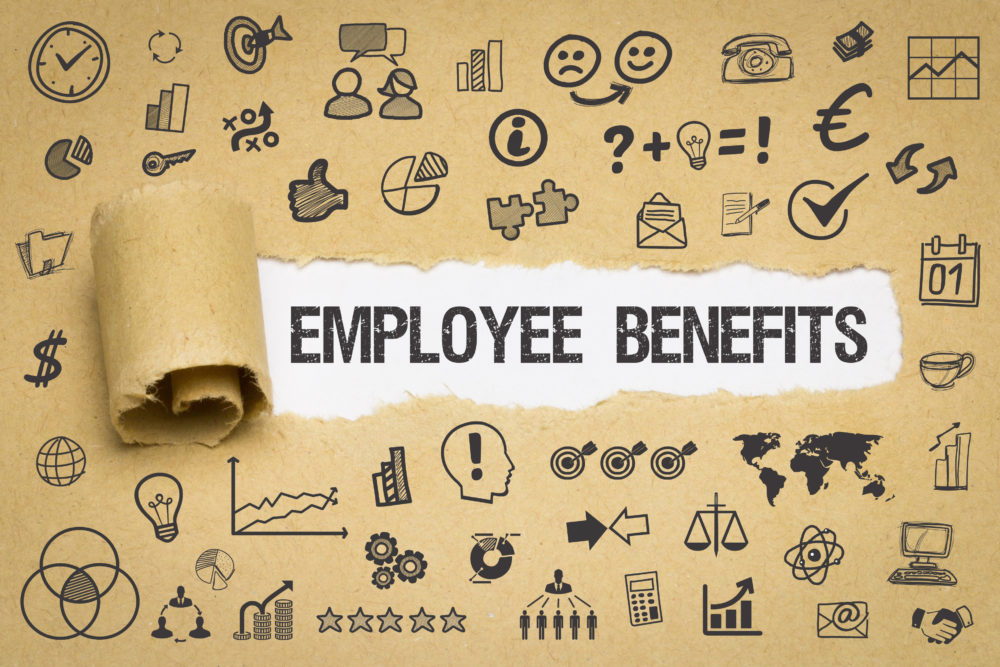Employee benefits are a useful tool in attracting staff. According to a recent Glassdoor survey, 57% of employees ranked perks and benefits among their top considerations when hunting for a new job.
Employee benefits range from being blatant gimmicks to genuinely life-enhancing, and anywhere in between. To help navigate the lingo, below are some benefit terms explained:
Cycle to Work scheme (C2W)
A free-to-offer Government-backed benefit whereby employees can get a tax-free bicycle and cycling accessories for commuting to work worth up to £1,000. This is paid monthly through a salary sacrifice, saving them between 32% and 48%.
Because employees pay back what they owe through a salary sacrifice, they effectively reduce their gross pay, reducing their employer’s National Insurance contributions by up to 13.8% of the value of all equipment supplied.
Considering the average cost of commuting in the UK is £146 according to TotalJobs; this saves people big money and reduces traffic on the roads as well as the burden on public transport.
Death benefit / Death in service
A payout of the annual salary multiplied by three upon death is offered by many firms. Google had a death in service policy, where half of the deceased employee’s salary was passed onto their spouse for ten years, plus $1,000 a month per child towards childcare.
Deskercise
Research from the NHS has found that sitting at a desk all day may be linked to deep vein thrombosis, certain types of cancers and early death. How to solve this problem? Swap the office chair for a Swiss ball, or try an under-desk pedal exerciser. Some offices have static bikes in meeting rooms so you can cycle while you brainstorm.

Duvet days
Duvet days can be cashed in by employees at any time to take an unplanned day off work, with no questions asked and no prior notice given.
Egg freezing
Offered by tech giants like Facebook and Apple, oocyte cryopreservation is designed to appeal to women who want more choice over when to have children. It has been criticised by some who believe it sends out a message that motherhood is a career liability.
Flexible working
A term that covers both working remotely and working different hours than the usual nine to five. This is one of the most in-demand benefits as it gives people a better work-life balance, more time with family and it recognises that humans are not necessarily productive within traditional working hours.
In a 2017 HSBC survey, 89 per cent of British workers said flexible working hours would motivate them to be more productive.
Four-day weeks
In its report into how the workplace can best benefit workers, the Trades Union Congress (TUC) called for a four-day working week. Many companies across different sectors are now trialling this – either shutting down shop completely on the fifth day, or covering all five weekdays with employees working shifts – with varying results.
There are arguments over whether four-day weeks are actually good for workplace productivity or simply for boosting morale. As companies start automating more tasks with AI, it seems likely this will eventually be achievable.
Mental health days
According to a VitalityHealth 2017 study, 6% of UK employees are suffering from moderate or severe depression while two thirds have financial concerns which the survey identifies as a significant cause of stress.
What’s more, employees are losing an average of 30.4 working days a year due to sickness or are under-performing at work because of ill-health.
The Mental Health Foundation gives all employees three ‘wellbeing days’ a year so people can recharge when they begin to feel overwhelmed. The belief is that productivity won’t be impacted as these days would otherwise be lost through presenteeism.
Nap pods / sleep pods
It’s easy to forget sleep is crucial to our wellness, productivity and a healthy immune system. According to the 2017 VitalityHealth study, 29.6% of employees sleep less than seven hours a night and lose 4.7 productive days a year.
For that reason, sleep pods for power napping have been trialled by some employers. However, offering somewhere for tired workers to rest is a controversial benefit, as it’s a telltale sign that staff are overworked.
On-site childcare
According to Chartered Institute of Personnel and Development (CIPD), only 5% of UK businesses have onsite nurseries or creches, and this is mostly available in the public sector.
“Only 5% of UK businesses have onsite nurseries or creches”
Private sector employers are least likely to offer organisational support for employees with caring responsibilities. In some trials, on-site childcare has proved to be a costly benefit that is distracting to parents but others can make it work. Goldman Sachs has a popular and oversubscribed nursery in London’s Square Mile.
Pawternity leave
Coined by beer maker Brewdog, pawternity leave is a week’s paid leave for those who have recently decided to welcome a puppy or rescue dog into their family. It helps ensure their new pet adjusts and they don’t come home to stinky surprises and an over-excited ball of energy.

Shared parental leave
After a compulsory two weeks’ leave for mothers, post-birth mums and dads can share up to 50 weeks of leave and up to 37 weeks of pay between them. A win for gender equality, but this has been law in Sweden since 1974 and was only introduced in the UK in 2015. Its success depends on take up.
Standing desk
Ever heard the phrase ‘sitting is the new smoking’? Well, standing up to work is the equivalent of running four marathons a year, according to research from Dr Mike Loosemore, a sports medicine consultant.
Our sedentary lives are, according to the NHS, increasing the risk of diabetes by 112% and cardiovascular events by 147%. So offices around the world are literally raising their game by implementing standing desks that can be used intermittently throughout the day to keep people mobile and healthy.
Unlimited holiday
Unlimited annual leave sounds too good to be true and, in some companies, it is. Peer pressure and managers not leading by example can mean employees end up taking less holiday than ever, leading to burnout.
Companies such as Buffer made it work by paying employees $1,000 to take their paid holiday days. Implemented well it can be a huge boon, as long as the company culture promotes breaks.
Wellness programmes
These are wide-ranging and cover everything from groups to help stop smoking to hatha yoga.
The common consensus now is that companies have a duty of care for the health of their employees considering they devote most of their waking hours to it. Matt Hancock MP, Secretary of State for Health has called for businesses to do more. He cites free fruit, cycle to work scheme and counselling sessions as a good example of workplace wellness initiatives.
A study by the Economist Intelligence Unit in 2016 found that employees that work in a wellness culture believe these programs impacted their overall happiness (89% agree) and improved their handling of stress (77% agree). Two-thirds felt wellness programs made them more engaged in their employers’ goals and visions.
Yay Day
This is an incentive from outdoor clothing brand, REI. They let their employees take days off to engage in outdoor activities as long as they can prove what they are ‘yay-ing’ about. Before you groan, giving paid time off to engage specifically in activities that link directly to the business is an absolute win-win.
Steve Edgell is the director of cycle to work scheme provider Cycle Solutions.
See also: Five employee benefits to attract the best talent when recruiting for your business





